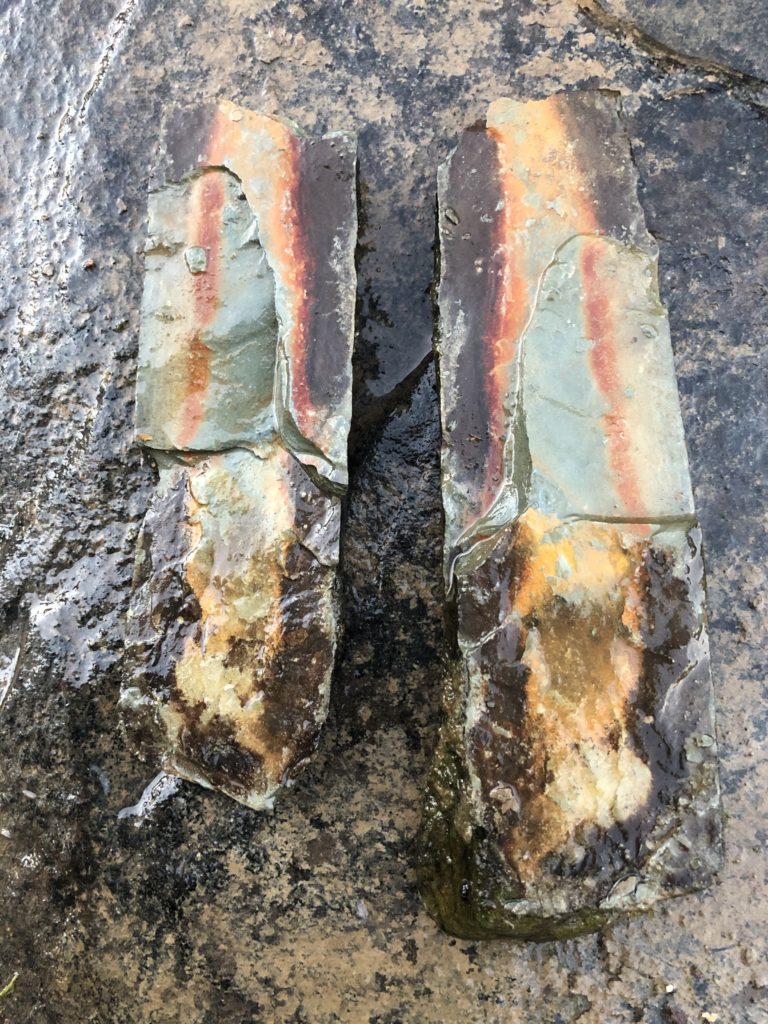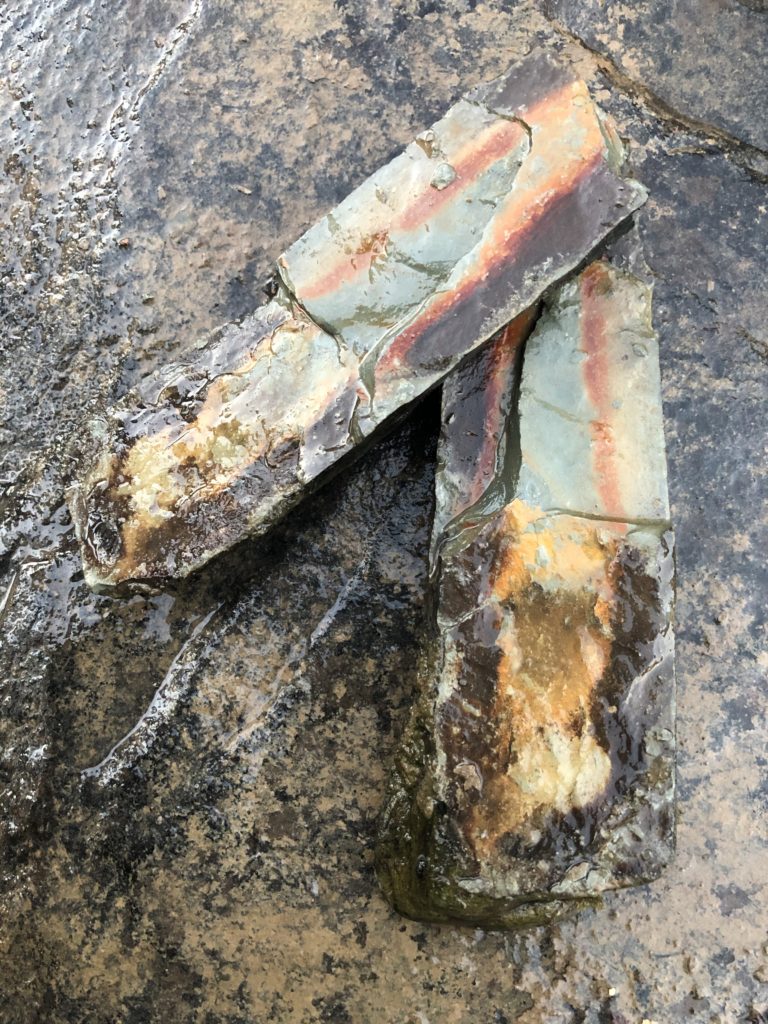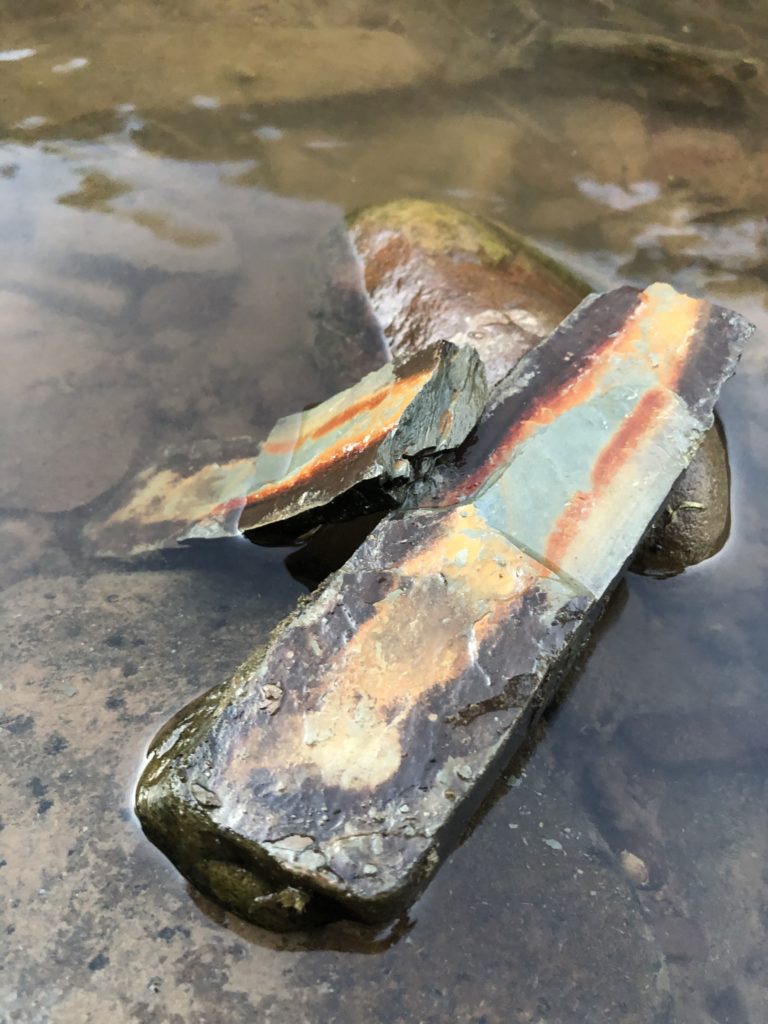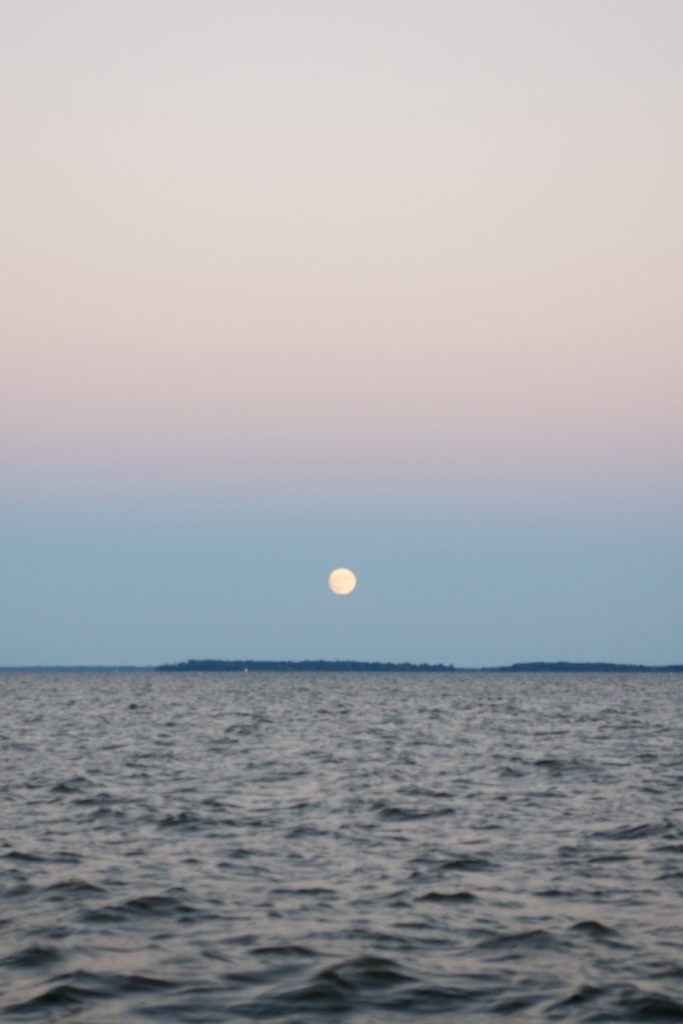Last weekend we took the kids into the woods to spend time with their great-grandparents and get away from technology for a little while. You can read more about that adventure over at In Such Times. While playing in the river, Walker found a rock which, when thrown in the way of eleven year olds given reign over a stretch of stony beach, split in half to reveal gorgeous striations of color.

I’m no geologist, but the colors in this rock suggests a high copper and iron content, oxidized by millennia of exposure to the air and water of West Virginia. A geologist buddy also suggested that they might be a form of oil shale.
I captured these photos using my iPhone X and natural light with no flash. Tap-to-focus and tap-exposure gave me a dramatic light balance. There are no filters on the image. The stunning swirls of liquid color are brought to life by getting the rocks wet in the river before placing them on a large flat stone to be photographed.

For the second photo I wanted to break away from the strict parallel lines and show off the complex topography of the break. The reflectivity of the wet stone was almost to much, creating highlights which are a little stronger than I would like, but as an unedited photo it is still stunning. I will likely adjust this a little before printing to tone down the highlights and boost the shadows, but the overall effect of the photo is what I had hoped for.

After capturing several photos on a dry surface, I thought it would be fun to partially submerge the rocks in the stream from whence they came. Here you can see part of the struggles which comes with taking photos that include water. The refraction of light in the deeper water combines with the glossiness of the wet surface to create an environment which is a significant challenge for computational photography. I didn’t have to resort to activating the AF/AE Lock on my camera and physically moving my iPhone in and out to achieve the desired focus, but it was a close call. After taking about a dozen photos I managed to capture this one.
Plenty more photos to come from the river expedition, but for now tell me what you think of this set and how you overcome the challenges of excessive brilliance when photographing wet surfaces with a phone camera.

